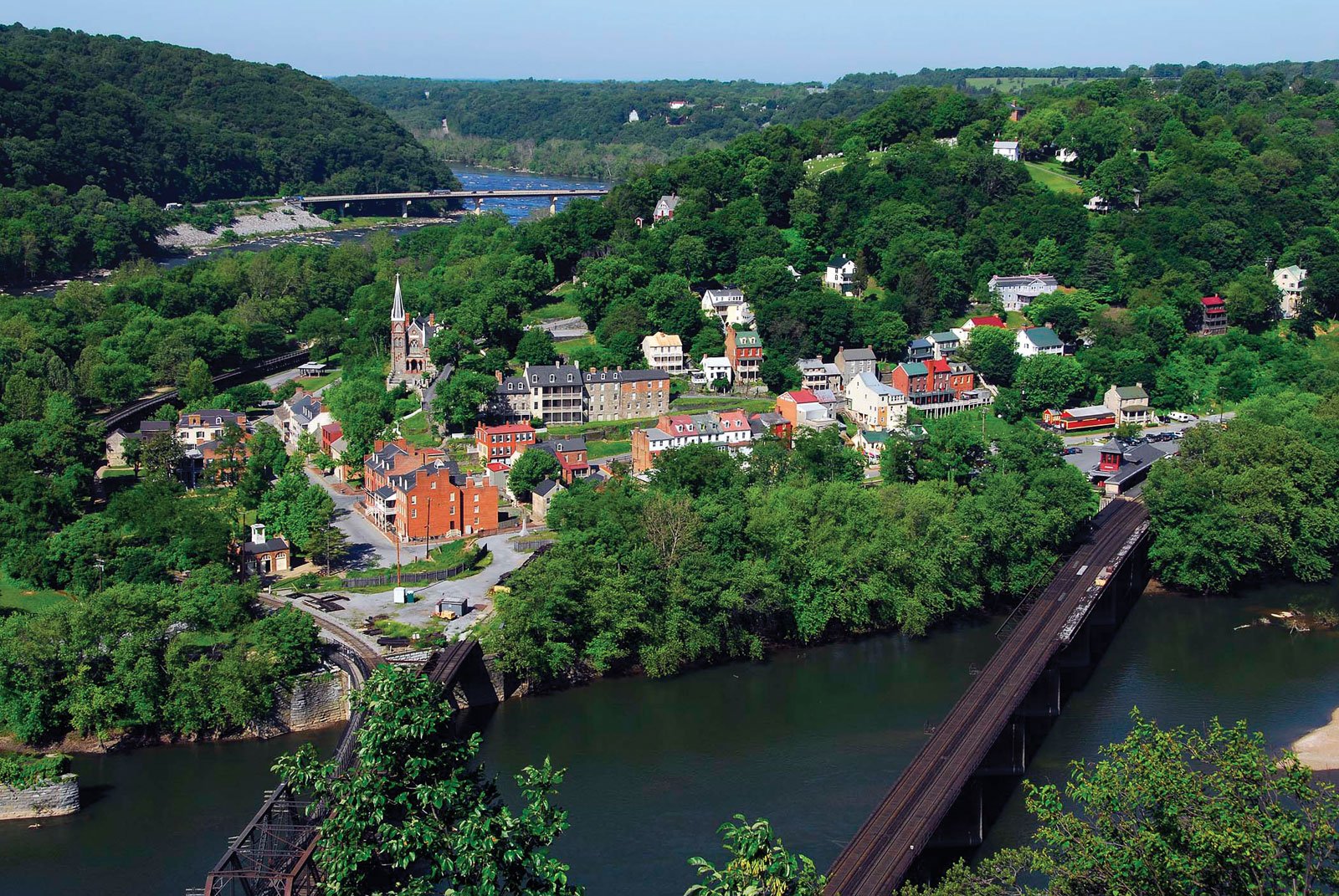Harpers Ferry National Historic Park: A Trip Through History
Have you ever wanted to take a walk through history? Would you want to see the role West Virginia played in the industrial era and the Civil War? To not only learn about West Virginia’s strong history but to actually travel back and experience it? Although time travel might not exist, taking a trip to Harpers Ferry National Historic Park is as close as we can get to experience our past. Dubbed “the flashpoint that ignited the civil war,” Harpers Ferry has played a huge role in shaping our nation's history.
Harpers Ferry is located in the northeastern panhandle of West Virginia at the confluence of the Shenandoah and Potomac Rivers. Because of its location on these mighty rivers, George Washington viewed Harpers Ferry as a strategic point of Military and Economic importance, and in 1796 chose it as the second location of the United States Armory and Arsenal. Fast forward to 1859, John Brown led a famous raid of the armory as an attack against slavery which is attributed to propelling the Civil War into motion. Following the Civil War, there were approximately 30,000 freed people in the Shenandoah Valley. Seeing the free people's need and want for education Stover Colege was established in Harpers Ferry as one of the first fully integrated schools open to all sexes and races.
Recognizing the significance of these events, and a few others, Congress authorized the establishment of Harpers Ferry National Monument (later to be Harpers Ferry National Historic Park) in 1944. This park contains 3,656 acres mostly in the West Virginia Panhandle and is home to a plethora of activities for the whole family.
If you're a history buff, Harpers Ferry National Historic Park is the place for you! When you visit make sure to take a trip to the historic Lower Town, where you will find yourself transported into the 19th century by walking along cobblestone footpaths. Here you can walk into buildings like Frankel’s Clothing Store, the Dry Goods Store, and the Blacksmith Shop to see accurate displays of 19th-century shops and merchandise. You can visit several museums catering to the Civil War, the Industrial Machinery of the time, John Brown and his famous raid, and how the Park Service discovers and restores historic artifacts. While here take a self-guided tour of the Harper House, John Browns Fort, and the foundations of a pre-Civil War neighborhood on Hamilton Street.
Harpers Ferry is also a great spot to learn about Black History in West Virginia. On the second floor of the John Brown museum, you can learn about the five black men who helped the Abolitionist during his famous raid of the US armory at the Allies for Freedom exhibit. Several of Storer College’s buildings are located within the park, this college was significant in providing education to former slaves and at the time was the only school in West Virginia where any person of color could receive an education past the primary level. In addition to learning about the significance of Storer College, you can visit the African American History Museum: Black Voices.
After filling your head with knowledge of the past it might feel nice to come back to the present with a trip through nature. Some people might know Harpers Ferry as the Spiritual Halfway point of the Appalachian Trail, and home of the Appalachian Trail Conservancy. Thru-hikers view the stop here as a crucial part of their 2,190 mile walk from Georgia to Maine. Almost all will head to the ATC and get a polaroid photo taken to be added to the museum as proof of this sacred milestone. When you visit Harpers Ferry keep a lookout for these Hikers and wish them luck on their journey, or maybe even join them with a quick hike following those famous white blazes! If hiking 2,190 miles doesn’t appeal to you there are still several hikes within the park, one of the more famous being the Maryland Heights trail. Fellow blogger Katherine Allen did this beautiful hike as a part of her 52 hikes series and covers the details in her blog.
Harpers Ferry is also home to other forms of outdoor recreation like Rock climbing, biking, rafting, and FIshing. It's no secret that West Virginia has been dubbed one of the best spots for rock climbing on the East Coast. Whether you’re into top rope, lead climbing, or bouldering Harpers Ferry offers dozens of routes for climbers. Maybe being on the water is more your thing. There are several different white water rafting outfitters in the area, and while you’re on the water cast out a line these rivers are the perfect place to catch smallmouth bass.
Whether you’re a West Virginia native looking for some history, a traveler looking for an adventure, or a thru-hiker making memories Harpers Ferry has something for everyone. It’s easy to see why Harpers Ferry National Historic Park has been preserved for future generations. Just spend one day here and you’ll feel more connected with West Virginia’s history, culture, and community.




